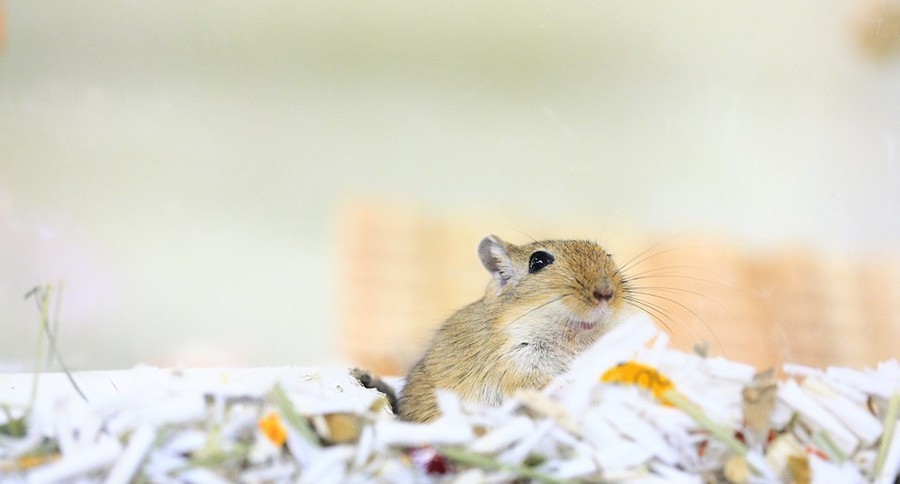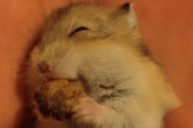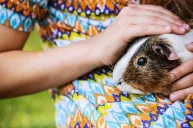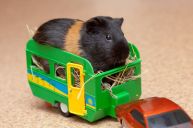Both hamsters and gerbils make great starter pets- but what's the difference?! You're looking to add a new member to the family and the requirements are small pets that are furry. If you're a first-timer, you've heard of hamsters and gerbils, so that's where you're going to start.
You're probably also thinking, they're both small, and furry- so it doesn't really matter which we go home with. However, the two are different enough that it does matter! It's best to know the differences so you can choose the proper fit for your family and ensure you can give your pet the care it needs.
All About the Looks
The main physical difference is the tail, or lack thereof. Pet gerbils have a long tails with a tuft of hair at the end, and hamsters have none.
You'll also notice that gerbils have large back feet, and tend to stand up and crouch when they're not running around. Hamsters have short stocky legs that prevent them from standing up straight.
https://www.instagram.com/p/B-AgtyLA8ih/
Activity
Another big factor in which furry family member you should choose is when your family is most active. Hamsters are nocturnal, and don't like being woken up when they're sleeping.
Gerbils are mostly nocturnal, but are sometimes active during the day, between naps. Gerbils basically sleep whenever they want.
No matter which pet you choose, be prepared for the fact that your furry friend may decide that the best time to use its exercise wheel is in the middle of the night.
https://www.instagram.com/p/B-AkHx5AHG4/
By the Numbers
If you want more than one furry pet, choose the gerbil. Gerbils live in colonies in the wild and these social animals prefer to be kept with a friend. Hamsters like to be kept as a solitary pet.
If you happen to choose more than one of either species, bring home two males. Females tend to be aggressive towards each other and if you bring home a male and a female- you will get lots and lots of babies.
https://www.instagram.com/p/B-AYQuAg0ym/
Lifespan
Hamsters and gerbils have roughly the same lifespan, which ranges from three to five years. They're great pets but it can be hard to say goodbye after just a few years.
https://www.instagram.com/p/B-ALgJWlxpw/
Dietary Needs
They each have teeth that never stop growing, so both species will need to be provided with chew toys of some type to keep their teeth trim. You'll also want to stay away from using gerbil or hamster cages that have plastic parts, since these small rodents will see them as prime chewing opportunities.
Both gerbils and hamsters are omnivores, and have the same dietary needs in addition to the chews. Gerbils don't have the cheek pouches that hamsters do, so they're less prone to food hoarding.
https://www.instagram.com/p/B-AqGkCAGy7/
Busy Bees
Activity level is another factor in which pet is best for you. Hamsters are the less active of the two and gerbils are very active and hyper.
Even though hamsters are the less active pets, they are still quite active and both need a solid running wheel. It is important to get a wheel without holes or slots, little feet and tails can easily get caught.
https://www.instagram.com/p/B-Am4AwDsW3/
Biting
Like any pet with teeth, babies of either species will need to be taught not to bite. With bonding and training, they will learn to trust you.
Pet hamsters are more prone to biting, especially when woken from a deep sleep or startled. Gerbils are more likely to hide when startled.
It's always important to supervise young children or small children when they're handling or interacting with these pets. With time and gentle handling, most hamsters and gerbils will become quite tame, but accidental bites and nips can still happen.
https://www.instagram.com/p/B-AnErrIV6B/
While the differences seem minor, knowing all the facts will help you choose a better fit for your family!
Remember to do all your research before bringing any new pet into the family. Be prepared to provide these small animals with the care that they'll need, including fresh food daily, a full water bottle, and a clean cage. Both hamsters and gerbils can make great pets.




